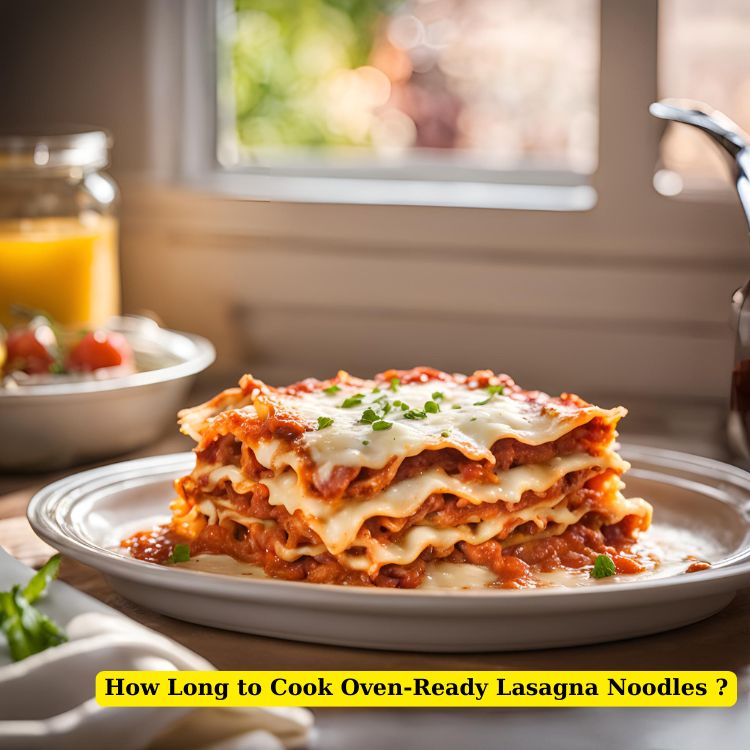Oven-ready lasagna noodles offer a convenient way to prepare lasagna without the need to pre-boil the noodles. These noodles are specially processed to cook directly in the oven, saving time and simplifying the preparation process. Whether you’re a novice cook or a lasagna enthusiast, understanding how to handle oven-ready noodles is essential to achieving a perfect lasagna. In this guide, we’ll walk through cooking times, tips, and best practices to make your lasagna delicious and satisfying.
What Are Oven-Ready Lasagna Noodles?
Unlike traditional noodles, oven-ready lasagna noodles are pre-cooked and dehydrated, allowing them to soften while baking. These noodles eliminate the need for pre-cooking, making them a popular choice for home cooks looking for efficiency. Their texture closely resembles traditional pasta when prepared properly, delivering a similar mouthfeel with less hassle.
How Long to Cook Oven-Ready Lasagna Noodles
The typical cooking time for oven-ready lasagna noodles can vary, but a general rule is 30-40 minutes at 350°F (175°C) when covered with foil. Removing the foil for the last 5-10 minutes allows the cheese to brown and the edges to crisp, which enhances flavor and texture. However, always check the package instructions, as different brands may have specific recommendations.

Assembly Tips for Perfect Lasagna
When preparing lasagna with oven-ready noodles, it’s essential to ensure the noodles are fully covered in sauce. This helps the noodles absorb moisture, which is crucial for even cooking. Here’s a quick assembly guide:
- Preheat the Oven – Set the oven to 350°F (175°C) or as instructed by your noodle brand.
- Grease the Baking Dish – Lightly oil the dish to prevent sticking.
- Layer the Sauce and Noodles – Start with a layer of sauce to prevent the bottom noodles from drying out. Add layers of noodles, filling, and cheese, ensuring each noodle layer is well-covered with sauce.
- Cover with Foil – Tightly cover the dish with foil to trap steam, helping the noodles soften evenly.
Tips & Best Practices
- Use Enough Sauce: Oven-ready noodles absorb more liquid than traditional ones, so ensure each noodle layer is generously coated with sauce. Thinner sauces work best, as they help the noodles hydrate and cook evenly.
- Allow Time for Resting: Letting the lasagna rest for 10-15 minutes after baking allows the layers to set, making it easier to cut clean slices.
- Enhance with Cheese Layers: Mozzarella, ricotta, and Parmesan are classic choices that add flavor and creaminess. Adding cheese in thin layers between the noodles prevents the lasagna from being too heavy and helps achieve a balanced texture.
- Optional Boil for Pliability: While oven-ready noodles don’t require boiling, some recipes recommend briefly soaking or boiling if you want to use them in lasagna roll-ups for more flexibility.
Frequently Asked Questions (FAQ)
1. Do oven-ready lasagna noodles need to be soaked?
Generally, no soaking is necessary if the noodles are adequately covered with sauce. However, soaking for 15-20 minutes in hot tap water can help make them more pliable if you’re layering a thicker sauce or want a softer texture.
2. Can oven-ready noodles be used interchangeably with regular lasagna noodles?
Oven-ready noodles are designed specifically for no-boil recipes. If substituting, expect a slightly different texture, as traditional noodles require boiling to achieve a softer bite.
3. How can I prevent my lasagna from becoming watery?
Excess moisture can come from high-moisture fillings (like vegetables) or thin sauces. Pre-cook vegetables to reduce moisture, and use thick sauces to create a more cohesive lasagna.
4. How can I tell if the lasagna is done?
The lasagna is ready when the noodles are tender, the sauce is bubbling, and the cheese on top is golden brown. A thermometer inserted into the center should read at least 165°F (74°C) for safe serving.
5. Should I cover lasagna while baking?
Yes, cover the lasagna with foil for the majority of the baking time. Uncover during the last 10 minutes to allow the cheese to brown.
Conclusion
Oven-ready lasagna noodles offer a convenient, time-saving solution for lasagna lovers. By ensuring the noodles are thoroughly coated in sauce, covering during baking, and using the right cooking times, you can achieve a delicious lasagna with a perfect texture. Whether you’re experimenting with new fillings or keeping it classic with ricotta and mozzarella, oven-ready noodles make lasagna night a breeze.
